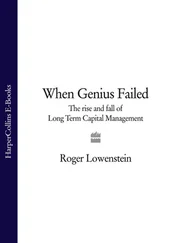By the autumn of 1526, Francis had come to realize that he needed to step up pressure on Charles. He made warlike noises, which encouraged the pope to act against the pro-imperial Colonna family in the States of the Church. French assistance, however, failed to materialize, and Clement VII’s situation soon grew desperate. In March 1527 he made a truce with the viceroy of Naples, who had landed in Tuscany with 9000 troops. Meanwhile, Francis looked to friendship with England rather than military involvement in Italy as the most economical way of bringing the emperor to heel. On 30 April, in the Treaty of Westminster, he and Henry VIII agreed to send a joint embassy to Charles to negotiate the release of Francis’s sons. If Charles refused their terms, war was to be declared on him.
From the pope’s point of view, the Anglo-French entente came too late. Despite his truce with Lannoy, the main imperial army under Bourbon invaded the States of the Church. On 6 May the Sack of Rome began. Bourbon was fatally wounded as he scaled the walls of the city, but his troops poured into it like a torrent, destroying everything in their path. Clement and some cardinals took refuge in the castle of Sant’ Angelo. On 5 June the pope signed a humiliating treaty which left him virtually a prisoner in imperial hands.
Francis restores his authority
Although the king’s authority had not been seriously threatened during his captivity, various bodies, notably the Parlement of Paris, had caused the regent enough embarrassment to justify a tightening up of that authority.
One of Francis’s first moves on returning home was to intervene in Berquin’s trial for heresy. He forbade the parlement to pass sentence and tried to alleviate Berquin’s prison conditions. The parlement submitted without demur when Jean de La Barre, acting for the king, released Berquin from prison. Francis also came to the rescue of the Cercle de Meaux. Lefèvre, Caroli and Roussel returned from exile: Lefèvre became the king’s librarian, Caroli resumed preaching in Paris and Roussel was appointed almoner to Marguerite de Navarre. The king also defended Erasmus after the Faculty of Theology had condemned his Colloquies. He ordered the parlement to ban publication of any work by the faculty which had not been previously examined and approved by the court and early in 1527 he abolished the juges délégués.
Reformers imagined that the king of France was coming over to their side. ‘The king favours the Word,’ Capito wrote to Zwingli, but Francis was simply reasserting his authority after the parlement and Faculty of Theology had tried to deal with heresy in their own way. While they defined heresy narrowly, he was evidently prepared to tolerate a fair measure of evangelicalism, especially within his court.
Francis also vindicated his authority in another sphere. In April 1526 he authorized Duprat to take possession of Saint-Benoît-sur-Loire and soon afterwards confirmed the Grand conseil ’s decree conferring the see of Sens on the chancellor. In December, during a debate between representatives of the parlement and Grand conseil in front of the king’s council, Duprat tried to justify the government’s action at Saint-Benoît. On 10 December the king’s council decided that the parlement had acted illegally and nullified its decrees regarding Saint-Benoît. In January 1527, Francis ordered the parlement to hand over the minutes of its debates during his captivity. The court complied after deleting passages about Duprat. Among churchmen involved in the Saint-Benoît affair, the most severely punished was Duprat’s rival, François Poncher, bishop of Paris. He was charged with sedition and imprisoned at Vincennes, where he died in September 1532.
Following his return from Spain, Francis did not reappear in Paris till 14 April 1527. He may have wanted to show his displeasure with the inhabitants’ behaviour during his absence. They had obstructed his mother’s peace-making efforts and had indulged in various disloyal pranks. When the king did eventually reappear, he did not give the customary notice. His entry was preceded by the arrest of eight citizens who had opposed the guarantees required under the Treaty of the More – a canon of Notre-Dame, three parlementaires , a notary and three merchants. The notary and merchants were soon freed, but the others were left to languish in prison for two years.
The quarrel between king and parlement was finally settled at a lit de justice on 24 July 1527. It has been suggested that this was, in fact, the first lit de justice , that all previous meetings of the parlement in the king’s presence had been merely ‘royal séances’, and that the phrase lit de justice was used in the Middle Ages simply to describe the trappings – throne, drapes and cushions – associated with the royal presence. Yet there is ample evidence that the medieval lit de justice had a distinctive judicial purpose. In July 1527, Francis acted as supreme judge, as his predecessors had done before him. The notion that he was creating a new forum dedicated to upholding ‘French public law’ is false. Francis needed to punish the parlement for its opposition to the regent during his captivity, to vindicate his own authority and that of his chancellor, and to remind the parlement of its rightful place in the constitution. The full majesty of kingship was reflected in the elaborate staging. Francis appeared on an elevated throne beneath a blue canopy embroidered with gold fleur-de-lys. On either side of him on raised tiers sat peers, nobles and prelates, maîtres des requêtes , and the three presidents of the parlement. Beneath the king, sharing in his majesty sat the chancellor. The floor of the Grand’ chambre was occupied by 75 councillors of the parlement and numerous courtiers. As the king took his throne, the parlementaires fell upon their knees until ordered to rise.
In a long opening speech, the president Charles Guillart criticized many aspects of royal policy, especially the evocation of lawsuits from the parlement to the Grand conseil.
Конец ознакомительного фрагмента.
Текст предоставлен ООО «ЛитРес».
Прочитайте эту книгу целиком, купив полную легальную версию на ЛитРес.
Безопасно оплатить книгу можно банковской картой Visa, MasterCard, Maestro, со счета мобильного телефона, с платежного терминала, в салоне МТС или Связной, через PayPal, WebMoney, Яндекс.Деньги, QIWI Кошелек, бонусными картами или другим удобным Вам способом.












